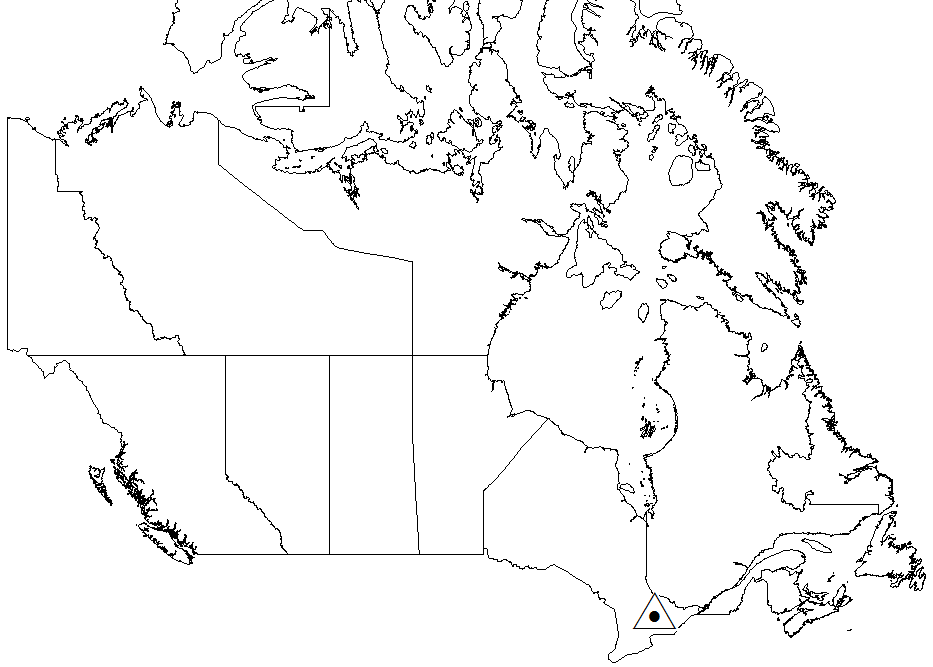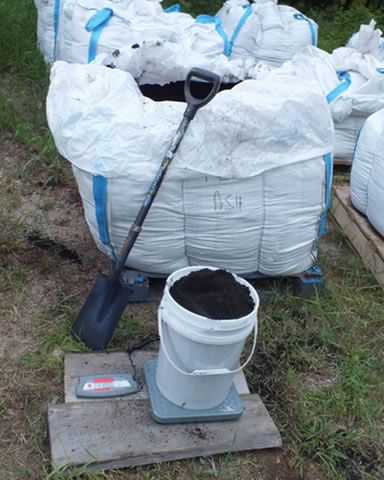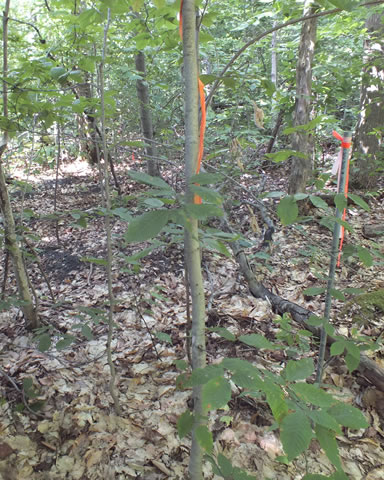Haliburton wood ash trial

Location
Southern Ontario
Ecozone: Boreal Shield
Elevation: 375 m
Climate
1981 to 2010 monthly climate point estimates generated from the Natural Resources Canada climate modeling project.
Mean annual precipitation: 1,074 mm
Mean minimum temperature in January: −17.0°C
Mean maximum temperature in July: 24.7°C
Site description
Before the experiment, the site was managed using single-tree selection, and supported an uneven-aged mixed deciduous stand of sugar maple (Acer saccharum Marsh.), American beech (Fagus grandifolia Ehrh.), eastern hemlock (Tsuga Canadensis (L.) Carrière), and yellow birch (Betula alleghaniensis Britt.). The soils have developed from poorly weathered granite or granitic gneiss deposits over the Precambrian Shield and have a sandy loam texture. The soils are Orthic or Eluviated Dystric Brunisols with a 5- to 8-cm forest floor layer.
Ash description
The ash used at the Haliburton wood ash trial was produced in a vibrating grate biomass boiler at a pulp and paper mill. The ash feedstock was spruce, pine, and fir bark generated during the debarking stage of the pulp production process. Bottom ash and fly ash were used for the experiment. Neither ash type was pretreated before application.

Wood ash being weighed to measure application rate.

Haliburton wood ash trial plot with wood ash spread on the forest floor.
Treatment description
Seven ash treatments were applied between August and September 2013. Treatments included 0 Mg ash per ha (control treatment), 1 Mg fly ash per ha, 4 Mg fly ash per ha, 8 Mg fly ash per ha, 1 Mg bottom ash per ha, 4 Mg bottom ash per ha, and 8 Mg bottom ash per ha. The quantity of ash applied (Mg per ha) was calculated based on the dry weight of the ash, and the ash was applied to the soil surface by hand. Treatments were replicated in four different locations when the experiment was set up.
Monitoring
Monitoring treatment effects on trees, soil chemistry, soil solution chemistry, and soil biota is ongoing. Data being collected include:
- Trees
- Large-tree diameter
- Seedling height and abundance
- Foliar nutrients
- Soil chemistry
- Acidity (pH)
- Total carbon, nitrogen, cations, and trace elements
- Exchangeable cations
- Available phosphorus
- Nitrogen mineralization
- Soil solution chemistry
- Acidity (pH)
- Dissolved carbon
- Dissolved nutrients and trace elements
- Soil microorganisms
- Bacteria, fungi, protozoa
- Microbial diversity and function
- Soil fauna
- Eastern red-backed salamanders (Plethodon cinereus)
Main contacts
Nathan Basiliko, Professor, Department of Biology and the Vale Living with Lakes Centre, Laurentian University
Trevor Jones, Research Scientist, Natural Resources Canada, Canadian Wood Fibre Centre
Page details
- Date modified: